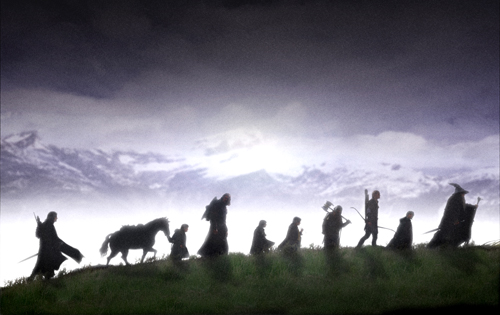Conveying your game’s essence with an iconic image
Published on

Using images as ambience can be difficult. You might not find the right images, and you might not find enough of them, even when practising artwork-driven adventure design. For these situations, using an iconic image can be the easiest and most effective way of including visual ambience in your game.
An iconic image is one that in some way conveys the essence of your game and is suitable as your only visual ambience for an entire session. The image itself can be of almost anything, but it has to achieve one goal: putting your players in the game world and keeping them there whatever happens in the session.
For a session centered around a single location, such as a city, an iconic image might be one of the location itself, depicting either the entire location or a prominent part of it. For a session focused on a specific concept, such as apocalypse, an iconic image might be one that conveys the concept’s mood without being tied to a particular place. For a session not bound to anything except a campaign setting, an iconic image might be abstract, such as a symbol (an example being the skull in Baldur’s Gate). These guidelines are intentionally vague, because iconic images can take almost any form and can only be judged in the context of a specific game.
An iconic image can function in two different ways. The first is to reinforce the group’s existing mental image of the game, making the ambience match the story being told. The other is to influence the group’s perception of the game, actually creating a mental image for the group rather than mirroring a pre-existing one. Many iconic images will do both to some degree.
An example iconic image
In a session centered around extraterrestrials and UFOs, the improvisational and collaborative nature of the game system prevented me from preparing specific images. I couldn’t make any assumptions about the setting or characters, but I did know that I wanted to convey the same mood as classic UFO stories like Close Encounters of the Third Kind, The X-Files, and urban legends: one of mystery, darkness, and uncertainty but not necessarily of fear or despair. I decided to use an iconic image for this purpose, and below is the one that I selected:

The image sets the stage immediately by depicting nighttime. While not all scenes took place during night, it created an expectation that many of them would, and prompted us to match the physical ambience of our daytime session as much as we could by turning off the lights and drawing the shades.
While the glow in the sky is in reality either a meteorological phenomenon or a photo manipulation, it is easy to see how players could easily interpret it to be something extraterrestrial, if only subconsciously. Similarly, the remote location depicted brings to mind stories of alien abductions taking place in isolated areas, further emphasizing the game’s extraterrestrial focus. While the story started out in a city, we found that as it progressed, it gradually moved toward taking place in the location depicted in the image, even though nobody had required or even suggested that it should.
While it may seem like an iconic image is an inferior replacement for a collection of images, this doesn’t have to be the case, as the example above hints. Using a single image can make your session more focused on a specific element, making the story more engaging during play and more memorable afterwards. It might be a lack of available material that prompts you to start using iconic images, but continuing to use them can become a artistic choice that you make even when you don’t have to.
If you have comments on this post, send them in and they might be featured on the blog.